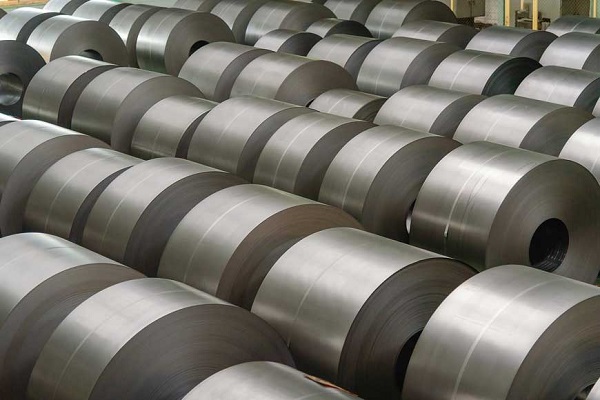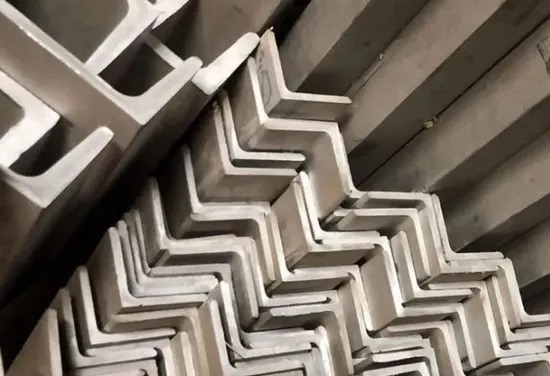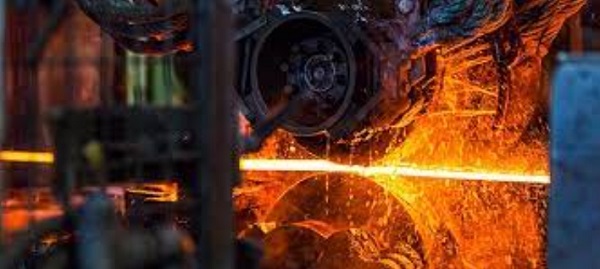In engineering, not every component needs a mirror finish or micron-level precision. Sometimes, the most important qualities are pure strength, rugged durability, and exceptional value. For these applications, hot-rolled steel is the undisputed workhorse of the industry. This guide will explore the properties of hot-rolled steel and explain why it is the go-to material for manufacturing strong, cost-effective structural brackets.

What is Hot-Rolled Steel? The Manufacturing Process Explained
What is hot-rolled steel? The name itself describes the process. It is steel that has been roll-pressed at extremely high temperatures—well above its recrystallization point. This process gives it a unique set of properties and characteristics.
Rolling Steel Above Its Recrystallization Temperature
Steel is heated past its recrystallization temperature (typically over 930°C or 1700°F) and then passed between large rollers. At this temperature, the steel is malleable and can be easily shaped and formed into sheets or bars. As it cools, the steel recrystallizes, resulting in a material with a uniform grain structure and no internal stresses.
The Telltale Signs: A Scaly Finish and Rounded Edges
Because it cools in open air, the surface of hot-rolled steel reacts with oxygen, forming a bluish-gray, flaky layer known as mill scale or a scaly finish. The edges and corners are also slightly rounded, as the material is not held to the same precise dimensional standards as its cold-rolled counterpart.
Key Properties of Hot-Rolled Steel for Structural Applications
The high-temperature manufacturing process endows hot-rolled steel with several key advantages that make it perfect for structural uses.
Excellent Strength and Durability
The process of hot rolling creates a material that is free from internal stresses, giving it excellent toughness and impact resistance. This makes it a form of high strength steel that is incredibly durable and ideal for load-bearing applications where reliability is critical.
Superior Formability and Weldability
Because it is so malleable, hot-rolled steel has excellent formability. It can be easily bent, shaped, and stamped into complex forms without cracking. Its chemical composition also gives it superior weldability, making it easy to join with other components in larger assemblies.
Cost-Effectiveness: An Affordable High Strength Steel
Perhaps its most significant advantage is cost. The hot rolling process is less intensive and requires fewer steps than cold rolling, making it a much more cost-effective option. It is the most affordable high strength steel available, providing incredible value for structural applications.
Common Applications: Where Hot-Rolled Steel Shines
Thanks to its combination of strength and value, you'll find hot-rolled steel used in countless structural applications across many industries.

Sturdy 90-Degree Angle Brackets for Furniture and Shelving
One of the most common uses is for sturdy 90-degree angle brackets. These are essential components in furniture construction, shelving units, and general carpentry, where they provide strong, reliable right-angle support. The strength of hot-rolled steel ensures these brackets will not fail under load.
Robust Fittings and Connectors for Industrial Equipment
In the industrial world, robust fittings and connectors are essential for building machinery and equipment. The toughness and weldability of hot-rolled steel make it the perfect material for these demanding applications.
Automotive Frames and Structural Components
You'll also find it used extensively in the automotive industry for frames, chassis parts, and other structural brackets where strength and impact resistance are more important than a perfect surface finish. To see how we can help with your structural project, visit the Pengce Metal services page.
Stamping Hot-Rolled Steel: What You Need to Know
While it is easy to form, stamping steel that is hot-rolled requires some special considerations to ensure a high-quality final part.

Managing Material Thickness Variations
Hot-rolled steel has a wider tolerance range for thickness compared to cold-rolled steel. A skilled manufacturer must design the stamping die to accommodate these slight variations to ensure consistent results throughout a production run.
Surface Preparation Before Finishing (e.g., Electroplating)
The scaly finish must be removed before any finishing process like painting or electroplating. This is typically done through processes like pickling (acid washing) or sandblasting. Proper surface preparation is key to ensuring the final coating adheres correctly and provides long-lasting protection.
The Smart Choice for Strength and Value
When your project's success depends on strength, durability, and cost-effectiveness, hot-rolled steel is often the smartest choice. It provides the robust performance needed for structural brackets and fittings at a price point that keeps your budget in check. Working with a manufacturer who understands the nuances of this material is key to unlocking its full potential. What is the most common structural component you design? What material do you typically use? Let's compare notes in the comments!
Your Questions About Hot-Rolled Steel Answered
What is the main difference between hot-rolled vs. cold-rolled steel? What's the difference between hot-rolled and cold-rolled?The main difference is processing. Cold-rolled steel is hot-rolled steel that has been further processed at room temperature. This gives it a smoother finish, tighter dimensional tolerances, and increased hardness, but it is also more expensive.
Does hot-rolled steel rust?Yes. Like most carbon steels, hot-rolled steel will rust if exposed to moisture without a protective coating. The mill scale offers very limited protection. For corrosion resistance, it must be painted, powder-coated, or plated.
Can you achieve a smooth, cosmetic finish with hot-rolled steel?Yes, but it requires secondary processing. After removing the mill scale, the surface can be ground, polished, and then plated or painted to achieve a high-quality cosmetic finish. However, if a pristine finish is the primary requirement from the start, cold-rolled steel is often a better choice.
Is hot-rolled steel suitable for precision parts? Is hot-rolled steel good for precision parts?Generally, no. Due to its wider dimensional tolerances and less refined surface, it is not the ideal choice for applications requiring very high precision. It excels in structural applications where strength and cost are the primary drivers. For your precision needs, contact our team to discuss other material options.




